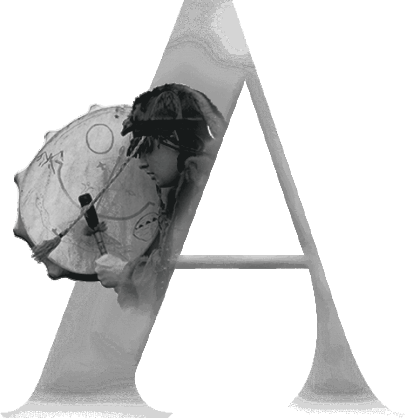The Origins and Traditions of the Altai People: A Study of Ethnographic Diversity
From the middle of the 19th century, due to the transition from a nomadic way of life to sedentary life, the Altaians (Dzungars after the collapse of the Dzungar state in Central Asia in the 18th century) were divided into a number of tribal and territorial groups until the beginning of the 20th century. At present, the Altai people are divided into small nationalities: Altaians, Teleuts, Shorts, Tubalars, Telengits, Uriankhais and live in the Altai Republic, Altai Krai, Kemerovo region of the Russian Federation, Western Mongolia, Xinjiang Uygur Autonomous Region of China.

The main source of studying the origin of a nation is its language. Having originated in the deepest antiquity, a language together with its bearer goes through a complex path of development, during which it mixes with neighboring languages, enriches, experiences a certain influence and influences itself on neighboring languages. In history, there are known linguistic shifts, assimilations of one language by another.
The Altaic language is a defining language for many Turkic-Mongolian, Tungus-Manchurian, Japanese-Korean languages. Therefore, these languages are included in the Altaic language family of the peoples of the world, as well as other language families: Indo-European, Semito-Hamitic, and others.
Of the Turkic peoples the closest to the Altaians in language are the neighbors Western Tuvinians, Khakas and Kirghiz, Uighurs of Central Asia, Karachais and Balkars in the Caucasus.
Also very important for the study of the history of the people are the data of ancient written sources. So the analysis of ancient Sumerian cuneiform texts found on the territory of Iraq (Mesopotamia) and dated to the last third of the 3rd millennium BC, conducted by many scientists, shows that most of the Sumerian words literally repeat the common Turkic, including Altaic, words and whole phrases. There are a lot of such coincidences, more than 4 hundred. The given coincidences give convincing evidence in the kinship of Sumerian and Altaic family of languages.
The ancient Sumerians were a part of the Pratyurkic tribes that had long ago broken away from the main mass and merged with the Indo-Europeans. In annals it is noted about the arrival of Sumerians to Mesopotamia from the plains, where there are a lot of cedar forests and rivers - presumably Siberia. And the discovery of a burial in the village of Karakol in the middle reaches of the Ursul River, which proves the synchronous development of cultures of Ancient Mesopotamia, Ancient Egypt and Ancient Altai, confirms that there were certain contacts between these distant areas, if not direct, then at least of the "relay race" type - from tribe to tribe.
Currently, the Republic of Altai is one of those regions where we can see in all its multicolors the traditional culture of the indigenous people - the Altai people, the Russian Old Believers and the Kazakhs, who have lived here compactly for more than 100 years.
Traditional festivals and games, in which archaic and modernity are represented in all their splendor, cannot but make a deep impression on a modern person, especially a city dweller - it may seem to him that he got into a completely different world, into another space-time dimension.
Ethnographic study of the region began quite a long time ago - more than 200 years ago. However, even to this day there are still many white spots in this sphere waiting for their discoverers. The greatest interest is in the traditional spiritual culture of the Altai people. There are archaic genres of folklore and musical instruments used here, which practically have not experienced modernization.
The traditional material culture of the Altai people holds no less secrets, the modern development of which is facilitated by the agricultural orientation of the republic's economy. Thanks to the preservation of economic and cultural types - cattle breeding, hunting, crafts, the role of which has especially increased in the conditions of socio-economic crisis - the peoples of the Altai Mountains have managed not to lose the distinctive features of their cultures.
Altai is known as one of the areas of ethno- and cultural genesis of modern Turkic-speaking peoples of the world. However, at the same time, it is at the junction of the formation of many Central Asian civilizations, which had an important impact on the neighboring territories and peoples. In the Altai language, with careful study, one can find words and concepts that do not belong to the vocabulary of the Altai language family.
Here it is possible to trace communication ways of interaction of great cultures of antiquity and early Middle Ages on the example of grain grinders and mills, other household utensils, cooking methods, making of traditional dwellings and much more.
For thousands of years, being at the crossroads of many cultures and languages, tribes and peoples, the Altai Mountains are still a rich mosaic of ethnic, confessional and linguistic diversity.
The Altaic language is a defining language for many Turkic-Mongolian, Tungus-Manchurian, Japanese-Korean languages. Therefore, these languages are included in the Altaic language family of the peoples of the world, as well as other language families: Indo-European, Semito-Hamitic, and others.
Of the Turkic peoples the closest to the Altaians in language are the neighbors Western Tuvinians, Khakas and Kirghiz, Uighurs of Central Asia, Karachais and Balkars in the Caucasus.
Also very important for the study of the history of the people are the data of ancient written sources. So the analysis of ancient Sumerian cuneiform texts found on the territory of Iraq (Mesopotamia) and dated to the last third of the 3rd millennium BC, conducted by many scientists, shows that most of the Sumerian words literally repeat the common Turkic, including Altaic, words and whole phrases. There are a lot of such coincidences, more than 4 hundred. The given coincidences give convincing evidence in the kinship of Sumerian and Altaic family of languages.
The ancient Sumerians were a part of the Pratyurkic tribes that had long ago broken away from the main mass and merged with the Indo-Europeans. In annals it is noted about the arrival of Sumerians to Mesopotamia from the plains, where there are a lot of cedar forests and rivers - presumably Siberia. And the discovery of a burial in the village of Karakol in the middle reaches of the Ursul River, which proves the synchronous development of cultures of Ancient Mesopotamia, Ancient Egypt and Ancient Altai, confirms that there were certain contacts between these distant areas, if not direct, then at least of the "relay race" type - from tribe to tribe.
Currently, the Republic of Altai is one of those regions where we can see in all its multicolors the traditional culture of the indigenous people - the Altai people, the Russian Old Believers and the Kazakhs, who have lived here compactly for more than 100 years.
Traditional festivals and games, in which archaic and modernity are represented in all their splendor, cannot but make a deep impression on a modern person, especially a city dweller - it may seem to him that he got into a completely different world, into another space-time dimension.
Ethnographic study of the region began quite a long time ago - more than 200 years ago. However, even to this day there are still many white spots in this sphere waiting for their discoverers. The greatest interest is in the traditional spiritual culture of the Altai people. There are archaic genres of folklore and musical instruments used here, which practically have not experienced modernization.
The traditional material culture of the Altai people holds no less secrets, the modern development of which is facilitated by the agricultural orientation of the republic's economy. Thanks to the preservation of economic and cultural types - cattle breeding, hunting, crafts, the role of which has especially increased in the conditions of socio-economic crisis - the peoples of the Altai Mountains have managed not to lose the distinctive features of their cultures.
Altai is known as one of the areas of ethno- and cultural genesis of modern Turkic-speaking peoples of the world. However, at the same time, it is at the junction of the formation of many Central Asian civilizations, which had an important impact on the neighboring territories and peoples. In the Altai language, with careful study, one can find words and concepts that do not belong to the vocabulary of the Altai language family.
Here it is possible to trace communication ways of interaction of great cultures of antiquity and early Middle Ages on the example of grain grinders and mills, other household utensils, cooking methods, making of traditional dwellings and much more.
For thousands of years, being at the crossroads of many cultures and languages, tribes and peoples, the Altai Mountains are still a rich mosaic of ethnic, confessional and linguistic diversity.
+79221343011 Whatsapp, Viber, Telegram, Signal
info@ahamkara.org
Follow Ahamkara on:
https://ahamkara.teachable.com/ - Online Shamanic School
https://www.facebook.com/ahamkara.eu/notifications... - my Facebook
https://www.instagram.com/ahamkara.eu/ - my Instagram
info@ahamkara.org
Follow Ahamkara on:
https://ahamkara.teachable.com/ - Online Shamanic School
https://www.facebook.com/ahamkara.eu/notifications... - my Facebook
https://www.instagram.com/ahamkara.eu/ - my Instagram
